The Tower of Tramariglio
 It is, without a doubt, the most important among the several coastal towers in the area of the Regional Park of Porto Conte; dominating the Tramariglio bay and the tourist centre ArchiMete. It was realized in chalky material at the end of the Sixteenth century, during the Spanish dominion. Today, it is still in good conditions, and from the inside, the dome vault and pillar on the terrace are visible, with the holes which allowed light to penetrate the structure.
It is, without a doubt, the most important among the several coastal towers in the area of the Regional Park of Porto Conte; dominating the Tramariglio bay and the tourist centre ArchiMete. It was realized in chalky material at the end of the Sixteenth century, during the Spanish dominion. Today, it is still in good conditions, and from the inside, the dome vault and pillar on the terrace are visible, with the holes which allowed light to penetrate the structure.
The necropolis of Anghelu Ruju
 Prenuragic area of extraordinary importance and the largest in Sardinia. It is located nearby I Piani, along the county road 42, not far from the airport of Alghero-Fertilia. It was discovered by chance in 1903, during the excavations for the building of a farmhouse. The finding of some human bones encouraged further excavations, until crockery, jewels and several hypogean graves were discovered. Over the years, a total of 38 Domus de Janas (Home of the Fairies) were discovered, along with underground graves dating back to three different historic periods: the civilization of Ozieri (3500 B.C.), of the bell-shaped vase (2000-1900 B.C.), and of Bonnanaro (1800 B.C.).
Prenuragic area of extraordinary importance and the largest in Sardinia. It is located nearby I Piani, along the county road 42, not far from the airport of Alghero-Fertilia. It was discovered by chance in 1903, during the excavations for the building of a farmhouse. The finding of some human bones encouraged further excavations, until crockery, jewels and several hypogean graves were discovered. Over the years, a total of 38 Domus de Janas (Home of the Fairies) were discovered, along with underground graves dating back to three different historic periods: the civilization of Ozieri (3500 B.C.), of the bell-shaped vase (2000-1900 B.C.), and of Bonnanaro (1800 B.C.).
The Nuraghe of Palmavera
Along the coastal road 127 Bis which connects Alghero to Capo Caccia, three and a half kilometres after Fertilia (at kilometre 32), we find the magnificent Nuragic complex of Palmavera. The main keep dates back to the Fifteenth-Fourteenth century B.C., and can be still visited in all its parts; including the large central room with a tholos cupola. Considered the structure of the complex, which was built at the foot of the Doglia Mountain, archaeologists presume that it was surrounded by cabins and refuges. The second cycle of life of the Nuraghe, started after the first half of the Ninth century B.C., when a second keep was added and the first one was covered with blocks of sandstone, a very common material in this area.
The visit is organized between the two towers, and it is also possible to visit the meeting cabin, where there are still a stone bench, a bath and the throne of the tribal chief. During the excavations, archaeologists found several artifacts, which today are mainly exhibited at the National Archaeological Museum “Sanna” in Sassari (at 64, via Roma; Phone nr. 0038.079.272203 – www.museosannasassari.it).
The Roman villa of Sant’Imbenia
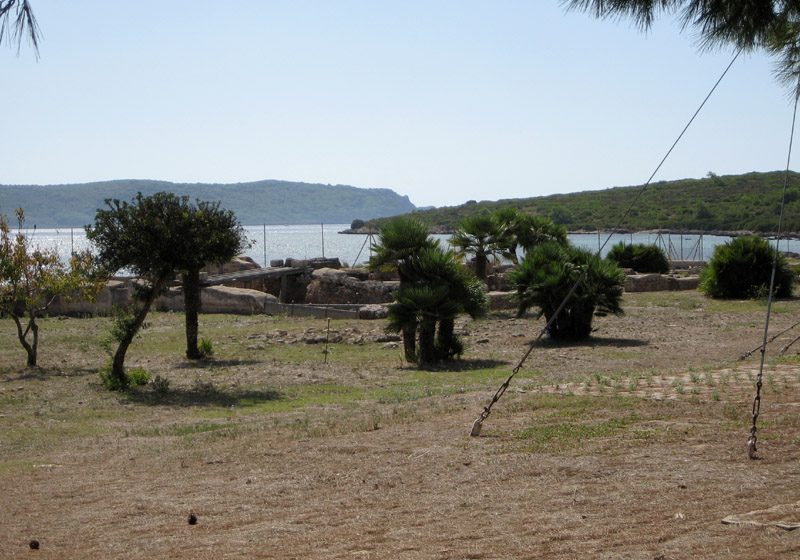 This archaeological area is located along the road which leads to Capo Caccia, just after the junction on the county road 55 Bis, which goes to Sassari. This area is located in the heart of the roadstead of Porto Conte, in the so-called “Bay of Nymphs” or “Nymphaeus Portus” of Tolomeo. The complex is located right next to the sea, and archaeologists have discovered 49 rooms divided up between an estimated 140 metres in length. Some mosaics are still clearly visible, but many of them have been removed and are now safely exhibited at the National Archaeological Museum “Sanna” in Sassari (at 64, via Roma; Phone nr. 0039.079.272203 – www.museosannasassari.it).
This archaeological area is located along the road which leads to Capo Caccia, just after the junction on the county road 55 Bis, which goes to Sassari. This area is located in the heart of the roadstead of Porto Conte, in the so-called “Bay of Nymphs” or “Nymphaeus Portus” of Tolomeo. The complex is located right next to the sea, and archaeologists have discovered 49 rooms divided up between an estimated 140 metres in length. Some mosaics are still clearly visible, but many of them have been removed and are now safely exhibited at the National Archaeological Museum “Sanna” in Sassari (at 64, via Roma; Phone nr. 0039.079.272203 – www.museosannasassari.it).
According to archaeologists, the villa was the retreat of a wealthy figure of that period, who dedicated himself to the so-called “otium”, which means the care of the spirit and the pleasures of the body. The extent of the complex and the structures found, however, leads to the presumption that this was a place dedicated also to crop production; benefitting from a privileged position in terms of boarding and maritime trades.
Over the centuries, the villa has undergone various renovations; the different building techniques used are still clearly visible, like the opus caementicium (Roman concrete) and the opus africanum (a sort of African masonry), including masonry in dry stones dating back to the Medieval period.
The part of the villa located furthest to the north, was probably on two floors and in the lowest part a wellness and bathing room, decorated with marbles and sumptuous polychrome decorations, was created. Among these decorations, a stucco representing a Nereid riding a sea animal is of special archaeological and artistic interest. One of the legendary figures is Nereus’ daughter, the marine divinity of Greek mythology, who lived in a cave in the depths of the sea. It is right in the area of Capo Caccia that we find the “Grotta di Nereo” (Cave of Nereus), one of the most important and stunning underwater ravines of the Mediterranean sea, and one of the routes proposed by the tourist centre ArchiMete.
What is ArchiMete
.
ArchiMete, like Archimedes, a great genius and inventor.
It is a tourist centre specialized in the sector of active and dynamic tourism. “Archi” refers to archaeology, history and culture; “Mete” refers to longed for and wished for destinations. The aim is to offer tourists the opportunity to create a “clever” holiday, which meets everyone’s expectations as much as possible.
ArchiMete is located in the middle of the Tramariglio bay, between a land and sea reserve: the Regional Natural Park of Porto Conte and the Marine Protected Area of Capo Caccia-Isola Piana. A natural landscape, where it is possible to spend holidays periods having fun in total relaxation, and giving in to your every whim.
Activities foresee dives (the area of Capo Caccia is one of the most famous in the world for its stunning underwater caves), snorkeling including a tour of the cliffs; kayaking and hiking. The renting of rubber boats offers the possibility to experience this corner of earthly paradise in the most real and personal way imaginable.
The land park
The sport centre ArchiMete Sardegna is located in the heart of the Regional Natural Park of Porto Conte, a natural protected area of great value created in 1999. The park covers an area of 5,350 hectares in the territory under the Municipality of Alghero, and presents very varied and unique landscapes. The coastal area is located between Capo Caccia on the western side and Punta Giglio on the eastern side; and is characterized by wide cliff ridges, which fall off into the sea; alternating with less steep stretches of rocks. Instead, the cape hinterland is dominated by soft and small hills where wild animals can often be spotted: from wild boars to deer; from fallow deer to weasels; including hedgehogs and the white donkeys of the Asinara, which can be seen within the state owned forest “Arca di Noè” (Noah’s Ark) at Le Prigionette, a few hundred metres far from the tourist centre ArchiMete Sardegna.
A few kilometres further north is the Baratz lake, the only natural lake of Sardinia and privileged destination of hiking, biking and riding tours, which passes through the area of Porto Ferro. Extending for half a kilometre, it is a real natural outdoor laboratory, thanks to the presence of several species of flora and fauna. On the lake’s shore the flourishing maquis include Cistus, wild rosemary, myrtle, lavender, and strawberry plants; and among the bushes, it’s easy to spot birds like the coot and the wild duck, while tortoises peep out a few inches from the surface of freshwater.
Another reservoir of great naturalistic and historic interest, is the pond of Calich, on the western side of Alghero, near Fertilia. The pond is inside the area of the regional park of Porto Conte and represents an ecosystem for different plants and faunal species. The Roman bridge stands out, and is, along with the Roman villa of Sant’Imbenia, one of the few ruins left of the Imperial Age.
We must go back about 6000 years, to the Neolithic age, to get an idea of the history of the Alghero territory. The area is full of stunning historical and archeological finds, dating back to the Prenuragic and Nuragic ages, like the hypogean necropolises of Santu Pedru (Saint Peter) and Anghelu Ruju (Red Angel, or rather the Devil), as well as the Nuragic villages of Palmavera and Sant’Imbenia; all places which are easily reachable from the tourist centre, ArchiMete Sardegna. Specifically, in Sant’Imbenia, during the Ninth century B.C., Phoenicians established an important commercial port by exploiting the natural shelter of the inlet of Porto Conte and the presence of freshwater springs.
Staff
Sandro Pileri: owner of the diving center, diving instructor ESA and scuba diving guide* specialized in the management of diving centres. He boasts twenty years of experience in the field of diving. The sea has always been his passion, and he nurtures an uncurbed desire for communicating his love for the marine world to others. He considers safety the most important ingredient to experiencing the sea and enjoying the underwater world. Sandro is also an experienced boatman with nautical licence.
He is qualified to teach the specialty Cave.
* No. 837 sports and diving guides official register of Sardinia Region.
**************************
.
Giovanni Zinchiri: (“The beautiful Gianni” for friends!) Dive master PADI, certificated CMAS *** and experienced scuba diving guide*. An activity that Gianni leads with passion and a special feeling. He knows deeply the local history and the marine biology and for him every moment is perfect to share funny and curious tales with divers and customers.
Gianni is also an experienced boatman with nautical licence.
* No. 358 sports and diving guides official register of Sardinia Region.
**************************
Sergio Farina: (“Serginho” for friends!) PADI instructor (Master Scuba Diver Trainer 966278) and scuba diving guide* with a long experience in Italy and other countries all over the world (Maldive, Kenya, Red Sea). Professional and motivated, he finds always the right moment for a smile during the diving session or scuba training.
He is qualified to teach specialties PADI such as Deep dive, Digital underwater photography, Enriched air, Underwater naturalist, Wreck, Care for children, Peak performance buoyancy, Project aware, Coral reef conservation.
Sergio is also an experienced boatman with nautical licence and a long experience on yacht and luxury yacht.
* No. 659 sports and diving guides official register of Sardinia Region.
…who works for us
Spin lobster: is the queen of Sardinia and a pleasant companion on every dive. Reticent but at the same time curious, it loves to parade its elegance right in front of your mask. A creature of habit, its feelers are always tuned to one program: the protection of nature.
Sea horse: one of the animals divers admire most for its nice look, but also for its elegant and slow moves. Its presence is a certainty for everybody, because it prefers natural and immaculate environments, where man’s presence is attentive and respectful towards nature.
Amberjack: is often a companion on wall dives and sea explorations. Its unmistakable silver dart lights the blue and is always exciting. It is rather shy and introverted, but as soon as it discerns the bubbles of divers in the distance, it gives a powerful whisk of its tail and curiously approaches.
Grouper: this silent and reticent fish is also very curious, and accompanies every dive taking place among ravines and seabed rocks. It is very jealous of its territory, but it also loves to parade around its strength and grandeur.
Barracuda: rapid, fast and silent. It is the predator par excellence of these waters and it often accompanies your descent and exit from the blue waters. The bubbles of divers are one of its favorite amusements, and it loves to parade along the shoal.
Dolphin: is the most playful collaborator of our staff. It darts, jumps, sings and often peeps out in the early morning from the calm stretch of the sea in front of Porto Conte. Sometimes it is cautious, but get to know him better and emotions are ensured.
Clawed lobster: faithful companion on many dives, above all, the ones in caves. Ravines are its kingdom, and lighting it up with a flashlight is sure to put it on its guard. It is very self-confident because it knows it can count on two powerful pincers…!
But that’s not all! As you can see from the pictures, there are lots of faithful companions of adventure to come across together!
We pay them well. We commit ourselves each day to protecting the environment in which they live; this is the most important part of our “holiday retreat” which lies between nature, history and freedom.
Places of interest
- The Palmavera nuraghe
- Inside the Neptune's cave
The history of the territory surrounding Alghero is fascinating and extraordinary in many ways. In fact, a period of relaxation in this area is enriched by cultural cues of considerable interest. In a part of the territory, which is not so big, stunning historical and archeological finds dating back to the Prenuragic and Nuragic ages are kept, like the hypogean necropolises of Santu Pedru (Saint Peter) and Anghelu Ruju (Red Angel, or the Devil), along with the Nuragic villages of Palmavera and Sant’Imbenia; all which are easily reachable from the tourist centre ArchiMete.
By clicking on the icons, on the left-hand side of this page, it is possible to know more about the history and other interesting facts about these places; as well as plan your trekking routes surrounded by nature, history, culture and archeology. All this flavored with a touch of adventure. Definitely not a bad deal!
Alghero (L’Alguer)
.
Click on the image or here to enter the gallery
.
With 44 thousand inhabitants, it is the fifth most populated town in Sardinia. It is known all over the world as “Barceloneta”, meaning little Barcelona, because of its Catalan origins. Over the centuries, Alghero has been conquered numerous times; but it’s only as of the eleventh century, that its most recent history gets written. First, the foundation of the ancient village by the Doria, a noble family from Genoa; then a series of attempted conquests. The unsuccessful conquest attempt by the Pisans in 1283 was, instead, followed by the conquest of the area by the Catalans in 1353. Led by Peter IV of Aragon, nicknamed “The Ceremonious”, he conquered the town, thanks also to a famine and an epidemic plague which had weakened the area. This would mark the beginning of the Catalan influence, which would continue in time, despite the ruling of other conquerors. In the second half of the Fourteenth century, the crisis of the Aragon Kingdom allowed the “Giudicessa”, Eleanor of Arborea, and her husband, Brancaleone Doria, to conquer Alghero again. Then, the Spanish and the Savoia rulings followed in 1720. However, the Catalan culture had already entered into the DNA of this town, insomuch as the ancient version of Catalan is still spoken by the population today and still influences customs. Even public acts, roads signs, and the names of squares are both in Italian and Catalan, so that Alghero is considered to be a linguistic island: 35% of its inhabitants speak Catalan in an Alghero variation, resulting in a minor language recognized by the Italian Republic and the Sardinia Region.
Alghero is the chief town of the “Riviera del Corallo” (Coral Riviera), because of the huge quantity of red coral of the finest quality present in the seabed of the roadstead, and the coast which leads up to Capo Caccia. A natural and economic heritage which gave life to an out-and-out district specialized in the handcrafted processing of this organism. In the striking historical centre of Alghero, there are many laboratories and goldsmith’s shops where tourists have the opportunity to admire stunning masterpieces in coral and see the tricky stages of the processing. The “coral tour” is one of the experiences that those coming to Capo Caccia and Alghero cannot absolutely miss out on!
Other informations
Search
Category
Tag Cloud
Archive
Febbraio 2022 (1)
Gennaio 2018 (1)
Maggio 2016 (1)
Gennaio 2016 (1)
Giugno 2015 (1)
Marzo 2015 (1)
Febbraio 2015 (1)
Ottobre 2014 (1)
Maggio 2014 (1)
Gennaio 2014 (1)
Ottobre 2013 (1)
Giugno 2013 (1)
Aprile 2013 (1)
Marzo 2013 (1)
Dicembre 2012 (1)
Settembre 2012 (1)
Agosto 2012 (1)
Febbraio 2012 (1)
Gennaio 2012 (2)
Dicembre 2011 (3)
Novembre 2011 (2)
Archimete 2.0

Questo opera è distribuito con licenza Creative Commons Attribuzione - Non commerciale - Condividi allo stesso modo 3.0 Unported.




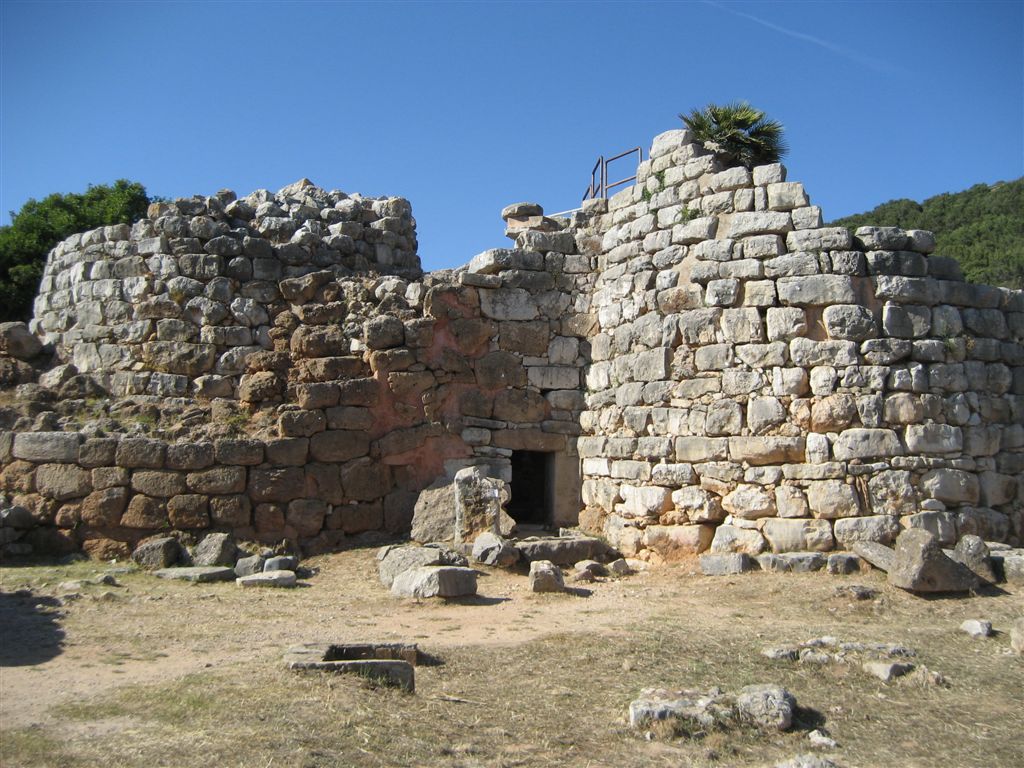
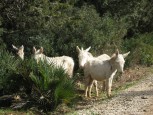

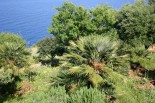
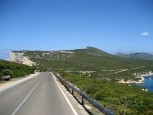



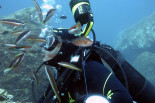


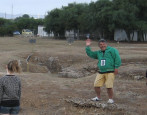

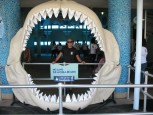



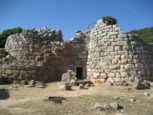
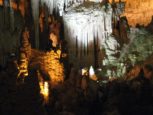


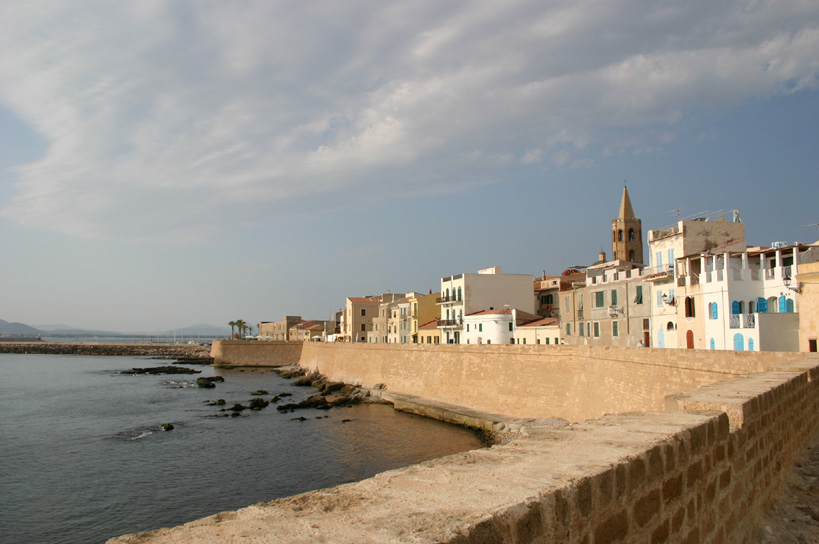
 RSS Blog
RSS Blog





